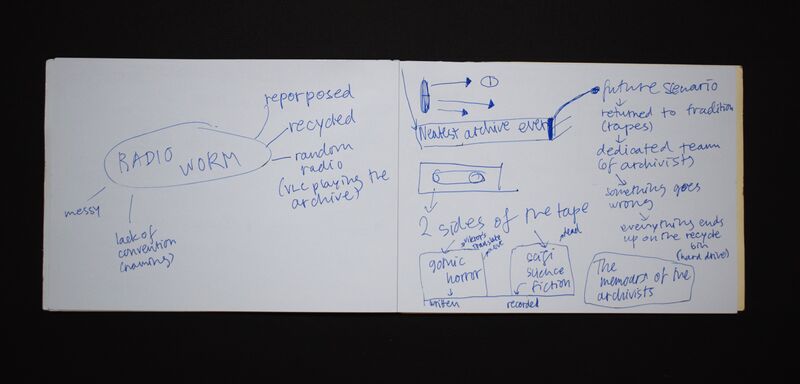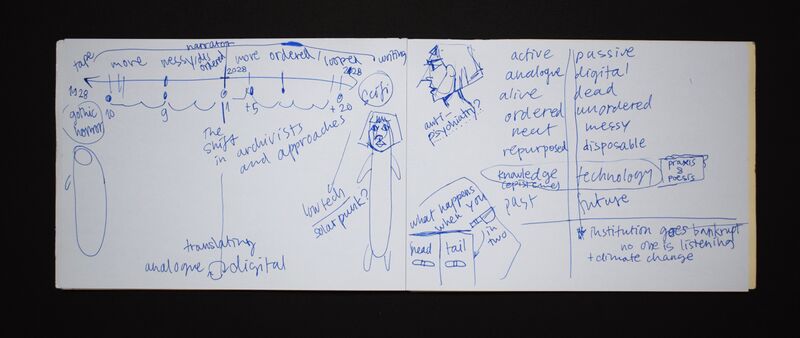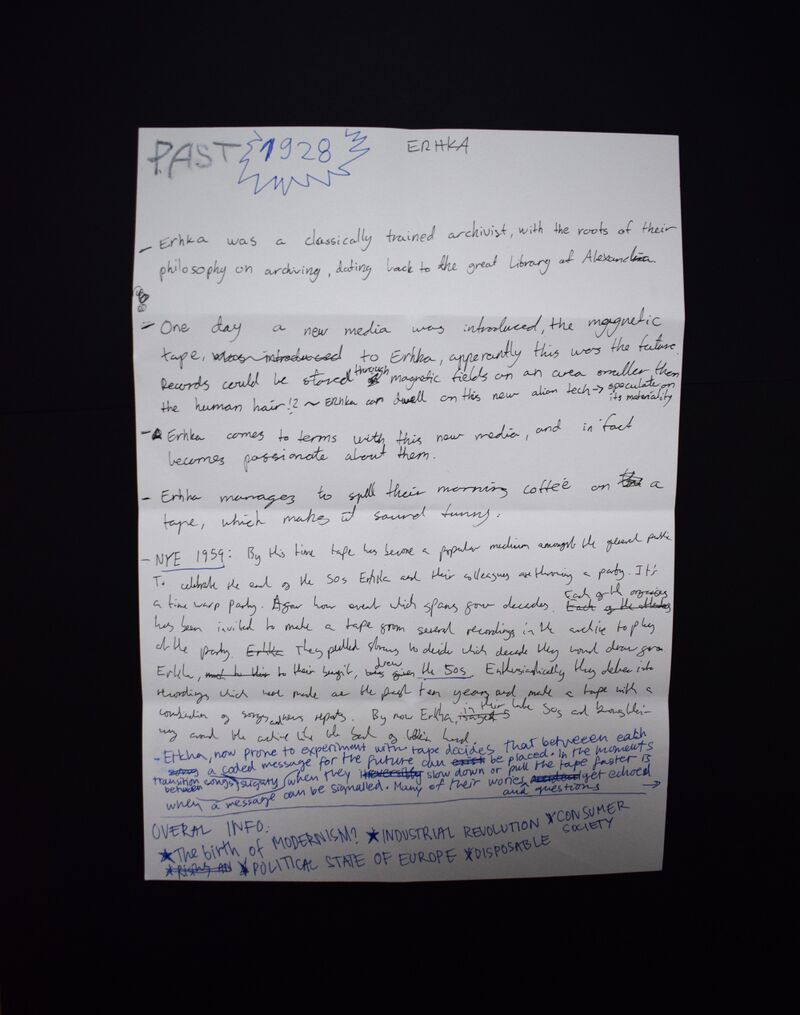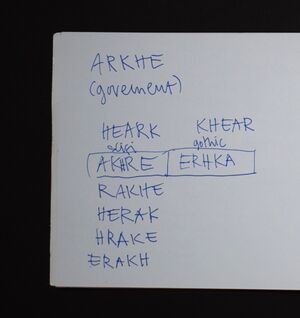User:Senka/Caretakers 7
Caretakers Week 7
This broadcast fell on the date of Halloween, so I volunteered to be a caretaker. Halloween holds a special place for me as a queer person. At a time when gender non-conformity was heavily looked down upon, Halloween used to be the day queer people could explore alternative modes of gender expression, do drag and imagine alternatives, without getting arrested. All under the pretence that it is just play-pretend, or a costume.
I wanted to play with the idea of creatures and monsters, sine a some of them have been created with the intention of social critique. Eg. zombies were a critique of commodity fetishism and consumer society, vampires a critique of the bourgeoisie. playing with fiction and the idea of creature I thought we can open up a different way to think about archives.
In my own practice regarding archiving, Saidiya Hartman's method of the critical fabulation was a crucial discovery. Critical fabulation is a writing method which combines archival records, critical theory and fiction to imagine and alternative and expand upon how we think about histories of oppression.
Etherpad of the broadcast [1]
Fellow caretakers: Riviera [2], Victor
Brainstorm and References
Saidiya Hartman's essay Venus in Two Acts that put in to play the method of the critical fabulation. [3] And a podcast where she explains the method and the use of it. [4] Later we decided that we will use a 20 minute except of this talk so that we can share the reference with everyone during the broadcast. Riviera edited the talk to 20 minutes and we crafted the narrative to lead up to the main character finding this recording of Saidiya Hartman speaking.
Fictional Narratives
After the initial brainstorm, we agreed that we will think about possible narratives to explore during the broadcast.
I immediately remembered a dream I had about archiving a while ago:
Architects started making dissolvable models of their prototypes because they didn't have enough space to store them anymore. The models they built would later be used to feed the land. It brought me to the thought that when an idea passes, it is supposed to feed the land for nutrients, and that this means that the soil can be scanned to view past items. Things that get undug are mostly static past, but the active past that comes back to us is the undead, so there is no digging required. |
'Radio-active data' once it leaks, seizes all the memory space of the individuals. Earworms that just won't let go. The radio-active songs don't allow you to think of anything else, just the song/sound.
Earworms as a haunting creature which activate the sonic archive, because they disables you from forgetting (we could play xenaudials double earworm tracks called Adjacent Exposure)
The manifestation of being possessed by sound is hard to gauge. Individuals become aloof, humming frequently, impatient and hard to reach. The frequency that's playing in their head is one only they can hear. A personal undead radio that cannot be turned off.
These we're the main ideas I brought to the next conversation, none of them in particular where taken up, but I think we really thought about this idea of how long an archival material lasts, when things decompose and similar.
Exquisite Corpse Writing
- We divided the narrative into 3 sections: Past, Present and Future. For each section we gave some overall parameters or guidelines for writing
- We all took turns in writing a section for 10 minutes, then rotated and handed our section to the next person to build on.
- Between each handout we would read out what has been written so far, for narrative cohesion. This proved to be quite difficult for me, as I can't read Riviera's handwriting to save my life.
- After finishing a round in which everyone had written a portion of each section, we choose who was gonna flesh out the section, and moved on to write everything digitally in an Etherpad. This allowed us to also edit, modify, erase and the like.
- We agreed on a timeline, and the names of the two archivists, Erkha and Akhre, both of which are anagrams of the word Arkhe, the origin for the word archiving.
Execution of Personal Accounts of Irreplaceable Lace: A 200 year long history of Lost and Found
Technical Difficulty:
- The first 40 minutes of our broadcast were recorded but not aired, because someone turned the broadcasting software off, so the archive was playing during that time instead :(
- Because of this, we took 40 minutes from the reflection part to listen to it, so that people can have a full view of the narrative we have built
Soundboard
- I made another soundboard to host all of the different sound that will need to be played during the broadcast and uploaded it online so that we could all use it and shift who's playing sounds so that the person reading can focus. I left the controls for playing the sounds so that we can keep track for the longer recordings, such as Riviera's mixtape. [5]
Narrative
- Our story ended up being about archiving as a profession and an attitude, and how materials can preserve and store the past. It was a reflection on how digital archival storage often is not as reliable or stable as we want to think that it is.
- The archivist of the past was using the experimental medium of lace, which was more durable but less popular than tape.
- There was also the presence of a dataclysm, an event which whipped presumably all digital records.
- So the archivists of the future ended up using pen and paper records as the most reliable ones, and a new "shimmer" technology which stores information on crystals
Reflection
The broadcast could be listened back to here [6]
- I really enjoyed the methods and protocols we employed to collaboratively write this story. I think the process allowed for a very cohesive narrative in which everyone had an equal say and could play with where they wanted the story to go.
- We did not really use critical fabulation as a method, but it was a tangential inspiration that impacted how we thought about the purpose of narrative and fiction





